syndicated
Latest

The best ice cream maker
By Marguerite Preston and Lesley Stockton This post was done in partnership with Wirecutter. When readers choose to buy Wirecutter's independently chosen editorial picks, Wirecutter and Engadget may earn affiliate commission. Read the full guide to ice cream makers. After researching for 95 hours, testing 16 machines, talking with pro ice cream makers and a food scientist, and churning gallons of the frozen stuff since 2014, we think the Whynter ICM-15LS is your best bet for making consistently great ice cream at home. It's not cheap, but because it's so easy to use and it essentially guarantees success, it would likely get a lot more play in your kitchen than cheaper, more finicky machines. The Whynter ICM-15LS not only made some of the smoothest ice cream in our testing but also ranked as the quietest-running maker we tried and the easiest to scoop from and clean. And since it's a self-refrigerating compressor machine, you won't have to deal with freezing an insert bowl or futzing with messy ice and salt. If the Whynter ICM-15LS sells out, or you just want more bells and whistles, the Breville Smart Scoop is a great alternative. Although it made slightly creamier ice cream than our top pick, the difference was so subtle that we don't think it's worth the extra $100 or more for most people. It has an auto function with 12 hardness settings and a keep-cool function so you can set your ice cream and walk away. And its brightly lit LCD screen and control panel with big buttons make it easy to use—even for kids. The Lello 4080 Musso Lussino is the crème de la crème of home ice cream makers. In our tests the large, sleek machine churned out smooth and creamy batches of ice cream in less than 30 minutes, the fastest of any model we tried. And our tasters unanimously voted its ice cream the smoothest and best-flavored. But its jaw-dropping price makes the Musso Lussino too expensive for casual dessert-making. If you plan on making more than a quart of ice cream a week, this might be the machine for you. If a $200 price tag on an ice cream maker sounds steep to you, consider the affordable Nostalgia ICMP400, which is just one step beyond old-fashioned hand-crank models. While it still requires you to add ice and salt to freeze the mixture, this machine is fitted with a motor to do all of the hard work for you. In our tests its ice cream was slightly icier than that from our main pick but still tasty. It makes up to 1 gallon at a time, and as long as you have enough ice and rock salt, you can turn ice cream all day. If you own a KitchenAid stand mixer, we really like the KitchenAid Ice Cream Maker KICA0WH attachment, as well. This is a bowl that requires prefreezing, which necessitates more planning ahead than our main pick. In our tests it made the absolute fluffiest ice cream of the machines we tried, since the lowest setting on the KitchenAid stand mixer is still faster than the speed at which ice cream makers spin. We didn't mind the texture at all; in fact, it was quite pleasant.

The best electric razor
By Dan Koeppel This post was done in partnership with Wirecutter. When readers choose to buy Wirecutter's independently chosen editorial picks, Wirecutter and Engadget may earn affiliate commission. Read the full guide to electric razors.

The best budget subwoofer
By Brent Butterworth This post was done in partnership with Wirecutter. When readers choose to buy Wirecutter's independently chosen editorial picks, Wirecutter and Engadget may earn affiliate commission. Read the full guide to budget subwoofers. Adding extra bass with a subwoofer is the surest way to make a sound system more satisfying. Our new pick for the best budget subwoofer is the Dayton Audio SUB-1200. It kicks out enough deep bass to shake your couch, it's easy to hook up, and it's a little more attractive (or a little less unattractive, depending on your perspective) than most budget subs. The Dayton Audio SUB-1200 12-inch subwoofer is a step up from the other budget subs we tested in a few ways. It has a more powerful bass than similarly sized models we tried, which means it can deliver a little more of that satisfying couch-shaking that makes action movies more realistic. Its rounded corners and flush-fit round grille make it more attractive than most budget subs, and its large rear panel and multiple connection options make it easy to connect to any system. The Dayton Audio SUB-1000L 10-inch subwoofer is built for people who want more bass in their audio system but don't have space for a conventional subwoofer. At only 6 inches thick, it's slim enough to slip behind many couches and chairs and even under some couches. You can also attach it to a wall using the included mounting system. Its output doesn't match that of the Dayton SUB-1200, but it has enough power to work well in a modest home-theater system or in a stereo system with bookshelf speakers.
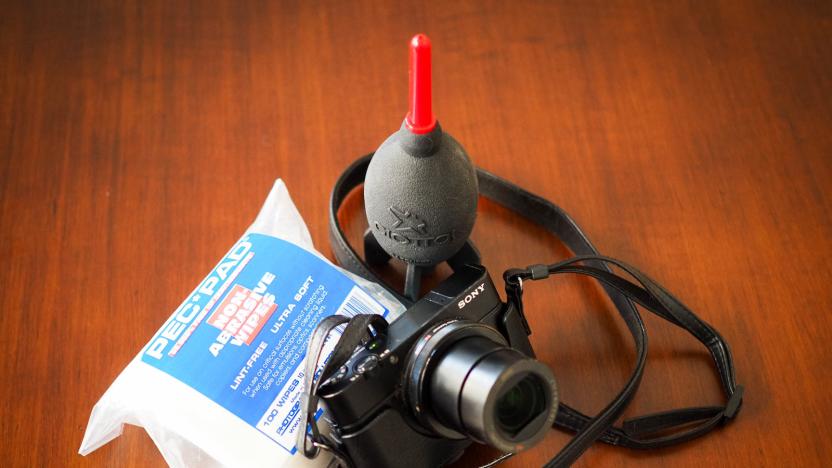
The best camera cleaning gear
By Tim Barribeau and Ben Keough This post was done in partnership with Wirecutter. When readers choose to buy Wirecutter's independently chosen editorial picks, Wirecutter and Engadget may earn affiliate commission. Read the full guide to camera cleaning gear. A camera, a lens, a memory card, and a decent eye are all you need to take a good photo. But you need some other things if you want to keep your camera and lenses in good shape, since photography isn't a sterile business. Unless you're shooting in a studio at all times, dust, mist, mud, rain, sea spray, and other outdoor filth can easily dirty your camera. And that can affect the quality of your photos. For cleaning the front element of your lens, we recommend the Giottos Rocket Air Blaster, a LensPen, a set of PEC-PAD wipes, and a vial of Eclipse cleaner. With these items in your bag, you should be prepared for anything the world can throw at your camera.
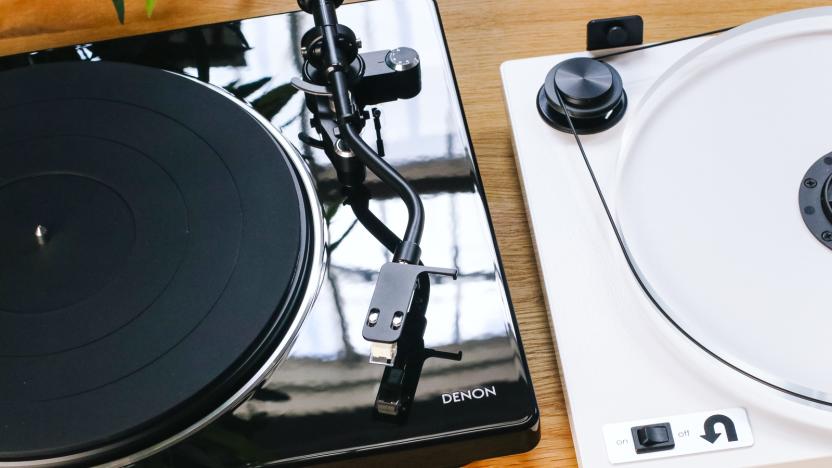
The best turntable
By Chris Heinonen This post was done in partnership with Wirecutter. When readers choose to buy Wirecutter's independently chosen editorial picks, Wirecutter and Engadget may earn affiliate commission. Read the full guide to turntables. Whether you're buying your first turntable or returning to the hobby after a long absence, we think you should get the Denon DP-400 because it delivers the best combination of sound quality and user-friendly features. It has a built-in phono preamp for hassle-free setup, offers above-average adjustment flexibility, and sounds great out of the box. The Denon DP-400 has a very clear and detailed sound, was the most speed-accurate of any turntable we tested, and played with very little distortion. It has an integrated phono preamp, so unlike many higher-end turntables, it doesn't require extra hardware to get started. The DP-400 offers convenient features like a speed control dial and automatic platter stopping with tonearm lift when a record finishes playing. The turntable performs very well with the standard cartridge, but if you attach an upgraded cartridge like a premounted Ortofon Red or Blue, you'll have a system that's so good that you'll never feel the need to upgrade further. If you're willing to sacrifice some convenient features—like easy speed switching, auto-stop, and a cue lever to raise and lower the tonearm—the U-Turn Orbit Basic offers good sound quality at a great price. The Orbit Basic takes almost no time to set up and is highly customizable. You can order it with a built-in phono preamp, choose a different color, upgrade the cartridge, and even add a cue lever later on. Its simple design works well.

The best Amazon Prime Day 2019 deals: Best of the rest
This post was done in partnership with Wirecutter. When readers choose to buy Wirecutter's independently chosen editorial picks, Wirecutter and Engadget may earn affiliate commissions. that support its work. Read Wirecutter's continuously updated list of Amazon Prime Day deals here.

The best Amazon Prime Day 2019 deals: Day two, the afternoon edition
This post was done in partnership with Wirecutter. When readers choose to buy Wirecutter's independently chosen editorial picks, Wirecutter and Engadget may earn affiliate commissions. that support its work. Read Wirecutter's continuously updated list of Amazon Prime Day deals here.
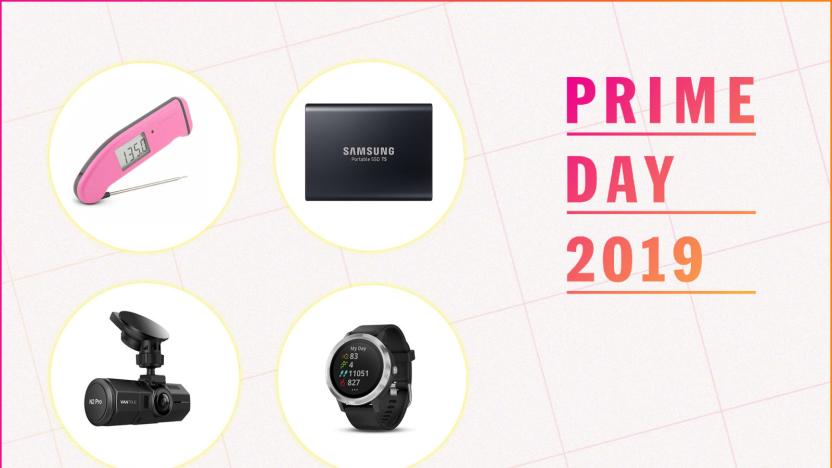
The best Prime Day 2019 deals: Day two, the morning edition
This post was done in partnership with Wirecutter. When readers choose to buy Wirecutter's independently chosen editorial picks, Wirecutter and Engadget may earn affiliate commissions. that support its work. Read Wirecutter's continuously updated list of Amazon Prime Day deals here.
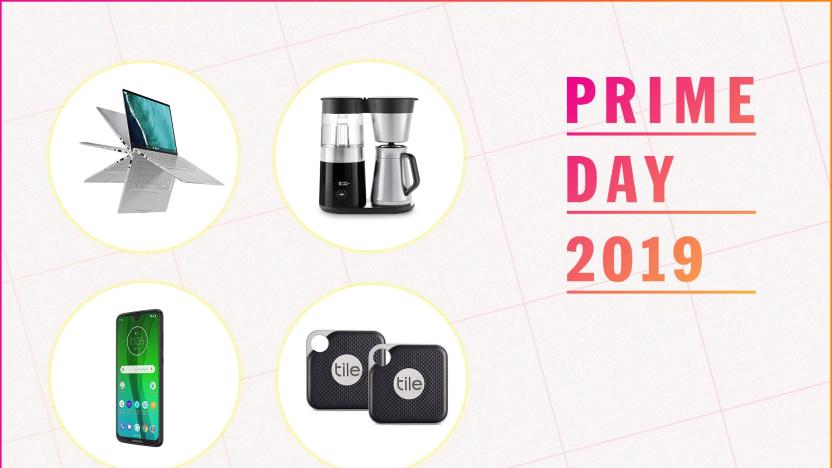
The best Prime Day 2019 deals so far: PM edition
This post was done in partnership with Wirecutter. When readers choose to buy Wirecutter's independently chosen editorial picks, Wirecutter and Engadget may earn affiliate commissions. that support its work. Read Wirecutter's continuously updated list of Amazon Prime Day deals here.

The best Prime Day 2019 deals so far
This post was done in partnership with Wirecutter. When readers choose to buy Wirecutter's independently chosen editorial picks, Wirecutter and Engadget may earn affiliate commissions. that support its work. Read Wirecutter's continuously updated list of Amazon Prime Day deals here.

Should I buy this big thing if it's a Prime Day deal?
By Wirecutter Staff Amazon Prime Day 2019 is coming, and we're getting ready to bring you all the best deals on Wirecutter picks and recommendations from our expert staff. Bookmark our Deals page, follow @WirecutterDeals on Twitter, and sign up for our daily deals newsletter to see the best deals from around the Web on Prime Day—and every day. During the frenzy of deal events like Prime Day, you can grab everything from mattresses to widescreen computer monitors at a discount. For instance, one former Wirecutter writer and fitness enthusiast found this treadmill, a model similar to our upgrade treadmill pick, the NordicTrack C 990, on sale during Prime Day 2017. Offering a large display and included assembly for $150 less than the model we recommended, the value was apparent for what this person wanted and needed. And that's the key to any discount. A truly great deal has to lie at the intersection of need, quality, and value—but need is the most important of the three. A shopping holiday like Prime Day can often drive a big purchase in the improvident haze of the moment, but it's important to pause, step back, and ask yourself a question or two before you take your brimming virtual cart to checkout. You can reasonably expect that at least one or two of our mattress, TV, laptop, camera, projector, grill, or office chair picks will be discounted on Prime Day. But an impulse buy can often lead to regret about spending big on a dust-collecting reminder of a hasty decision. So before you buy, ask yourself a few questions. Is it actually a deal? We see a lot of good deals during big shopping holidays, but we see a lot of mediocre-to-bad deals too. Whether it's raising the price just before Prime Day to inflate the discount percentage or just an average deal we see every two weeks, there are a lot of pitfalls, even for the wary shopper. Luckily for you, our Deals team carefully researches price trends and deal histories on all of our picks to save you time and effort. So if you see the item featured on our Deals page during our Prime Day coverage, we've already verified that it's a deal worth spending money on. If you're evaluating a deal yourself, here are a couple things to keep in mind. Make sure to consider the percentage you can save when you're looking at a deal. A $50 discount on a $100 item makes it a steal. But on a $1,000 item, $50 isn't a huge markdown—and the sale might be worth skipping if you'd value the extra time to calmly think the purchase over. But if it's an item that rarely goes on sale or you're willing to buy at full price, sometimes a relatively small drop in price can be worth jumping on—especially if we haven't seen the price drop significantly lower (we're looking at you, MacBooks and iPads). Another important note is that an item's street price (the price it sells for on most days) is almost always different from the list price (the price the manufacturer recommends). Although it can be difficult to determine the street price on some items, you can always check the price history on websites like CamelCamelCamel. Or you can drop us a question via @WirecutterDeals on Twitter. Amazon displays both the percentage and the dollar amount you save when it shows sale prices—but it bases those figures on the list price, which doesn't give you the full story about how good the deal is. Our Deals team always makes sure to tell you the percentage you save off the street price as well as the price something sells for every day, and tries to give context on how the deal compares to prices we see throughout the year and during other major holidays. Will I use this? If an impulse purchase is aspirational, it can feel especially satisfying in the moment, marrying the buzz of a big spend with the notion that you're doing something good for yourself. But you should make sure this big purchase is something you already had on your shopping list or something you would want even at full price. (There are worthwhile variants of many items that may merit consideration if discounted, a topic we'll explore more below.) When you see something tempting, first ask yourself whether that thing resolves a problem or satisfies a need. A treadmill won't make you run a marathon, a grill won't make friends come over more often, and an upholstered bed frame won't make dates like you more. All of these things need to come from you. "I add things to an Amazon wish list, and if they are still on the list in three or four months I consider buying them," said Wirecutter senior staff writer Chris Heinonen, who covers TVs. If you add a 4K TV to your wish list now, you'll have time by Black Friday to consider whether you really want to take the plunge (a better time to buy anyway in most cases, especially if you're seeking a 2019 model). Is this a variation of what I've been eyeing? If you want a specific TV, consider other models in the same line or last year's model of the same television. Be careful—although you can nab a variant that offers nearly all of the features of your preferred model for significantly less, the quality and features can vary greatly even within the same brand. A logo isn't necessarily a bulletproof indicator that you're getting everything you want. You can reach out to our experts via @WirecutterDeals or @Wirecutter to see if a variant is worthwhile or if last year's model still presents a great value. What's my budget like? It doesn't matter if a nonessential item is half off if you can't afford it. Credit card interest and regret can quickly sour the momentary joy of immediate savings. Can I just fix my old thing? If you're buying to replace a broken or worn-out item you already own, first check to confirm whether your old thing is under warranty. Warranties from reputable companies can cover common fixes or even get you a replacement if something is beyond repair. For example, a foam mattress under five years old suffering from sagging or indentations may be covered by the manufacturer's warranty, and although such replacements can present a short-term hassle, it's well worth the thousand dollars you could save. While you're thinking about any substantial purchase, looking up the warranty and return policy of the item you're eyeing can help confirm that the big purchase you have in mind is the right buy for you.
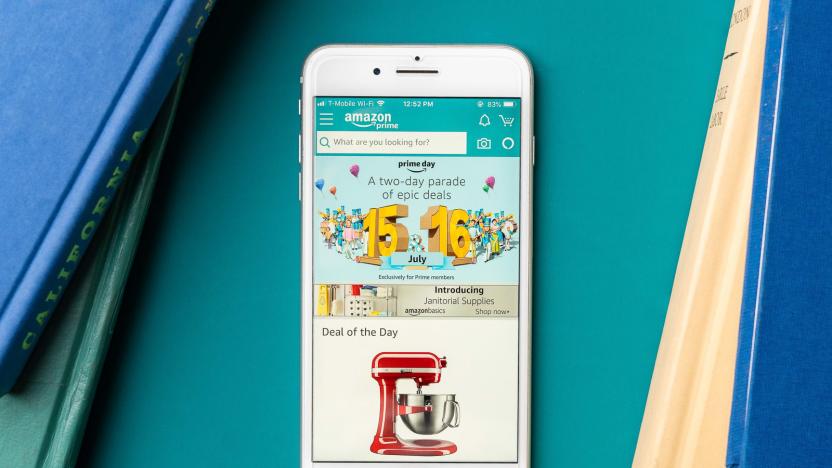
Prime Day pro tip: Find extra deals with Amazon's app
By Nathan Burrow Amazon Prime Day 2019 will begin July 15, and we're getting ready to bring you all the best deals on Wirecutter picks and recommendations from our expert staff. Bookmark our Deals page, follow Wirecutter Deals on Twitter, and sign up for our daily deals newsletter to see the best deals from around the Web on Prime Day—and every day. Prime Day is coming, and with it tens of thousands of deals. Because you surely don't want to spend every minute of Prime Day on your laptop scavenging for deals (that's our job!), let me offer a tip: Use the Amazon app, available for iPhone and Android. The app offers a great experience plus mobile access to the same marketplace you can find on the main Amazon site, including advance Prime Day deals and promotions. Amazon adds more Prime Day–specific content to its app with every passing year. Last year, for instance, we saw a number of app-exclusive deals that you couldn't get on a laptop. Once you download the app, tap the Prime Day banner—it's presently displaying a days to Prime Day countdown. You'll find pre–Prime Day promotions as well as previews of the larger-scale Prime Day events (so far the the recent Taylor Swift concert and an upcoming celebrity Twitch Prime live gaming event have been featured heavily). You'll also see a "Get ready for Prime Day" section with a tutorial showing some of the features of the app, such as how to "watch" an item.

Prime Day and Whole Foods: What you should know
By Nathan Burrow Amazon Prime Day 2019 will begin July 15, and we're getting ready to bring you all the best deals on Wirecutter picks and recommendations from our expert staff. Bookmark our Deals page, follow Wirecutter Deals on Twitter, and sign up for our daily deals newsletter to see the best deals from around the Web on Prime Day—and every day. Lovers of organic produce (or just a bountiful salad bar) are nearly two years removed from Amazon's finalized acquisition of Whole Foods. In that time, the high-end grocery chain formerly saddled with the pejorative "Whole Paycheck" nickname has changed a lot. Behind the scenes, Amazon has introduced supply-chain shifts and datafication of the shopping experience. The result? For select items, it's something rarely associated with Whole Foods in past years: savings. Spring 2019 has already seen additional price drops, and if Prime Day 2018 is any indication, this year's Amazon event could result in even more opportunities to save at Whole Foods. The Wirecutter Deals team's favorite Prime Day Whole Foods promotion of 2018 was a $10-for-$10 offer that was effectively free money for Prime members. Thankfully, Amazon has revived the offer for 2019. Spending more than $10 at Whole Foods or on a Whole Foods order via Prime Now before Tuesday, July 16 (while scanning in the purchase via the Whole Foods or Prime Now app) gets you a $10 credit to your Prime account for use between 12 a.m. PT July 15 and 11:59 p.m. PT July 17. For regular Whole Foods shoppers who plan to do any Prime Day shopping, taking advantage of this promotion is a no-brainer. While Prime members save an additional 10% everyday on sale items at Whole foods, as Prime Day approaches, Whole Foods is also offering exclusive Prime Day discounts on a variety of foodstuffs. If you're a fan of Whole Foods' pre-prepared foods, you'll find a variety of them heavily discounted in the run-up to Prime Day, including rotisserie chicken, pizza by the slice, and baked goods. Earlier this year, we pit the Whole Foods 365 brand against Trader Joe's in a snack war for the ages. Although the Whole Foods 365 brand didn't always emerge victorious in those taste tests, we're sure that if we see Prime Day deals on Wirecutter faves like Whole Foods Original Hummus or Whole Foods Organic Dark Chocolate, we'll be calling them out on our page and on Twitter. Finally, if you're a regular Whole Foods shopper and a Prime member, the Amazon Prime Rewards Visa Card offered serious savings during Prime Day of last year (and may offer similar savings during Prime Day 2019). This card, which comes recommended in our guide to the best credit cards for groceries, offers 5 percent cash back every day for purchases at Whole Foods and Amazon—but during Prime Day festivities last year, that cash-back percentage jumped to 10 percent for purchases up to $400 at Whole Foods. That could be a very big deal for people making big grocery purchases during this event.

How to prepare for Amazon Prime Day
By Alex Roth Amazon Prime Day 2019 will begin July 15, and we're getting ready to bring you all the best deals on Wirecutter picks and recommendations from our expert staff. Bookmark our Deals page, follow Wirecutter Deals on Twitter, and sign up for our daily deals newsletter to see the best deals from around the Web on Prime Day—and every day. Amazon has officially announced Prime Day. The event will start at midnight Pacific on Monday, July 15, and will continue for 48 hours, 12 hours longer than last year. It's also more than just Amazon, with competing retailers offering discounts and price matches of their own. And while the opportunity to save has grown, so has the risk of wasting money on some impulse purchase you don't need. No matter where you shop, the key to coming out of Prime Day with your budget intact (and with something useful, or at the very least fun, on the way) is to do a little bit of preparation and to set some realistic expectations. Browsing Lightning Deals at 3 a.m. won't net you a great 60-inch 4K TV at 50 percent off. But knowing ahead of time what you want, and what price to pounce on, will.
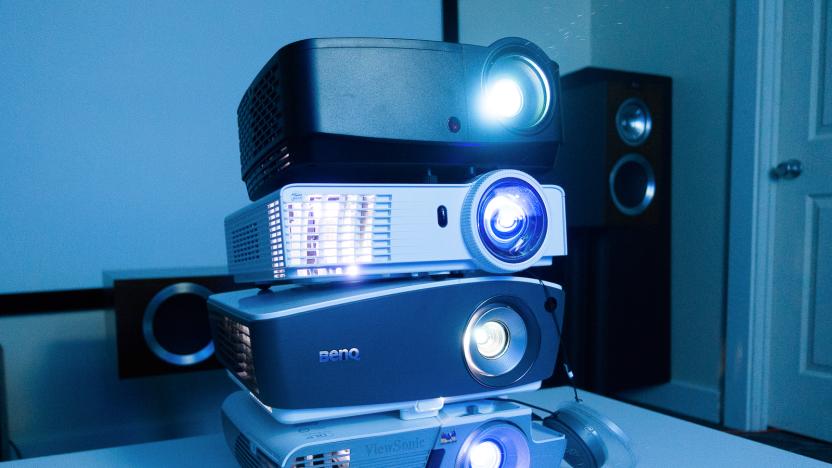
The best projectors
By Chris Heinonen This post was done in partnership with Wirecutter. When readers choose to buy Wirecutter's independently chosen editorial picks, Wirecutter and Engadget may earn affiliate commission. Read the full guide to projectors. We've watched hundreds of hours of TV, movies, and test patterns, testing dozens of projectors to figure out which model best fits your needs. Whether you're outfitting a small space for an occasional movie night, upgrading your living-room home-entertainment system, or building a dedicated home theater, we've got a projector recommendation for you.
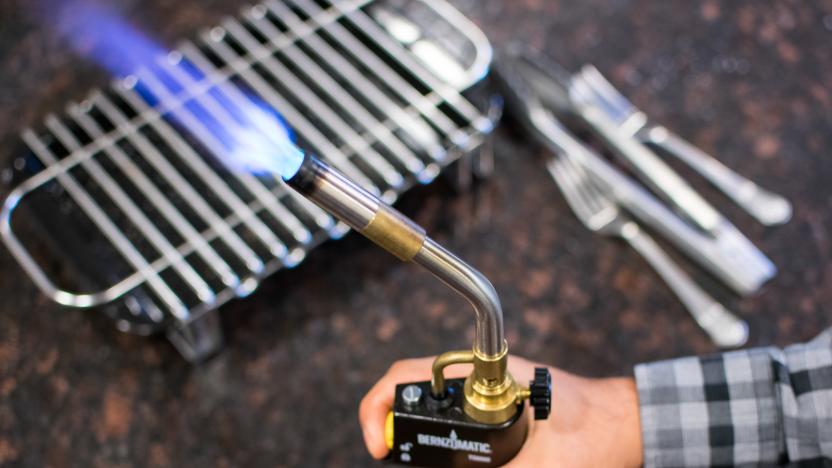
The best sous vide machine and gear
By Tim Barribeau and Nick Guy This post was done in partnership with Wirecutter. When readers choose to buy Wirecutter's independently chosen editorial picks, Wirecutter and Engadget may earn affiliate commission. Read the full guide to sous vide machine and gear. After testing dozens of sous vide cookers over the past six years, we think the Anova Precision Cooker Nano is the best immersion circulator for home cooks. It's the smallest, most affordable model from a company that's consistently made some of the best-performing cookers we've tested. And its precise temperature control and quick heating are on a par with that of much more expensive machines. The Anova Nano's Bluetooth connection allows you to set and control the cooker from your phone, and use Anova's app to set the time and temperature from preset recipes onto the circulator. The cooker also has controls on it though, meaning you don't need to use your phone if you'd prefer not to. Like just about every sous vide circulator we've tested, the Anova cooker is accurate enough for even the most exacting of cooking techniques. This is crucial because even minor variations can foil your attempt at perfectly runny egg yolks with just-set whites. The ChefSteps Joule relies exclusively on a smartphone for all controls adjustments; it doesn't have onboard controls. If you're okay with that, this cooker is in many ways equal or superior to the Anova Precision Cooker Nano. It's physically smaller, it's just as accurate, it heats water faster, and it can cook with less water in a pot thanks to a magnetic base and a unique pump system. We love the app, which works over either Wi-Fi or Bluetooth. Monoprice's Strata Home Sous Vide Immersion Cooker 800W is louder than other cookers we tested, but it is inexpensive and reliable, making it a great entry-level option for someone just getting started with sous vide cooking. It's not as advanced as the circulators from Anova or ChefSteps, because it lacks any sort of wireless connection. But in our tests, it got to temperature quickly and held the setting properly. At around $70, its typical street price is less than half that of our other picks. Sous vide cooking is only the first step when it comes to meat. After you've cooked the protein through, searing creates a delicious, crispy brown exterior. Although you can finish your food in a pan, we found Bernzomatic's TS8000 to be the fastest tool for searing. It attaches to a standard camping propane tank and is easy to use.
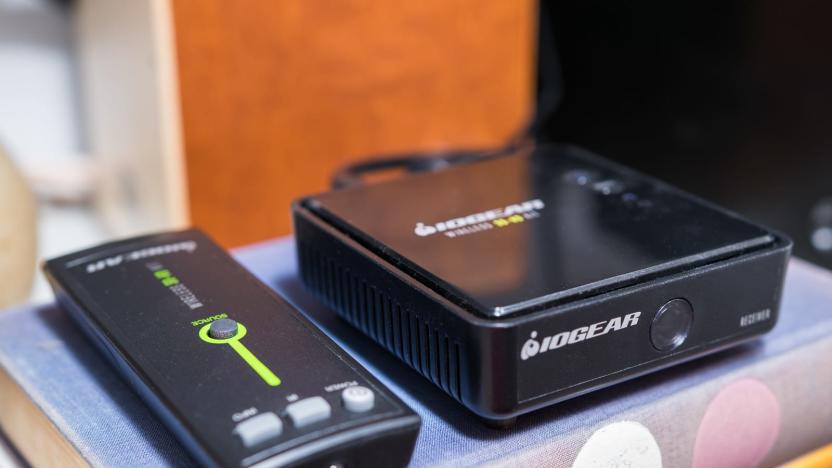
The best wireless HDMI video transmitter
By Rachel Cericola and Geoffrey Morrison This post was done in partnership with Wirecutter. When readers choose to buy Wirecutter's independently chosen editorial picks, Wirecutter and Engadget may earn affiliate commission. Read the full guide to wireless HDMI video transmitters. After spending 25 hours flipping channels and swapping video sources, we've decided that the Iogear GW3DHDKIT Wireless HDMI Digital Kit is the best wireless HDMI transmitter. Though other models on our list boast the same 100-foot transmission, this was the least expensive model that also combines two HDMI inputs and the option for USB power. It's the best choice for people who can't or don't want to run cables across the room to a projector or TV. The Iogear GW3DHDKIT Wireless HDMI Digital Kit is an inexpensive, simple-to-use option for wirelessly sending HDMI video and audio signals in 1080p and 5.1 across the room or around the house without losing quality. The base unit has two HDMI inputs and one HDMI output, so you can leave multiple sources plugged in, and it can conveniently draw power from a USB 3.0 port (more on this below). If you're looking to fill the room with additional audio, the Nyrius Aries Home+ features support for 7.1 sound. Like our top pick, this model can support two HDMI sources, can be powered from a USB port, and performs reliably. However, additional cost kept it from taking the top spot. The Monoprice Blackbird Pro 16049 doesn't work as well through walls as our other picks, but is strong enough to send the signal across a room. It's a cheap, easy way to stream an HDMI source. It has only one HDMI input, but does include support for 7.1 sound and USB power, and was the least expensive model we tested.

The best cheap scanner
By Ben Keough This post was done in partnership with Wirecutter. When readers choose to buy Wirecutter's independently chosen editorial picks, Wirecutter and Engadget may earn affiliate commission. Read the full guide to cheap scanners. We've spent nearly 70 hours testing inexpensive flatbed scanners, and we're convinced that the Canon CanoScan LiDE 300 is the best one for everyday users. While it's not the quickest or most powerful scanner, it hits a sweet spot with great out-of-the-box image quality, and a simple setup, compact size, light weight, and low price that puts it in a class of its own. Though it's the junior member in Canon's lineup, the LiDE 300 provides ample resolution, fast-enough scans, and all the same software features as its more expensive stablemate. In our tests it produced excellent results with a wide variety of content, from office docs and photos to books and children's drawings. We also liked its simple, one-cord setup and compact, lightweight design. You'll have to deal with Canon's clunky, outdated software, but that's par for the course with scanners—and it's actually better than what you'd get from Canon's chief rival, Epson. If you want to scan film with a flatbed, Epson is the only game in town, and the Perfection V550 is your best bet. Film scans look great whether you're working with negatives or slides, and Epson's Digital ICE technology does an excellent job of bringing even old, scratched up celluloid into the modern era. However, the V550 isn't as quick as the LiDE 300, and we don't like its image quality as much on default settings. The software situation is dubious, too, since crucial software can't be downloaded and must be installed from the included CD-ROM.

The best portable air conditioner
By Thom Dunn This post was done in partnership with Wirecutter. When readers choose to buy Wirecutter's independently chosen editorial picks, Wirecutter and Engadget may earn affiliate commission. Read the full guide to portable air conditioners. If you don't have central air, and a window AC isn't an option, get the LG LP1419IVSM portable air conditioner—the quietest and most efficient unit we've found after researching over a hundred portable air conditioners and testing more than a dozen. Most portable ACs are pretty similar, but the LG LP1419IVSM delivers better cooling performance than other models, yet it uses less energy, makes less noise, and can dial in a more precise comfort level than other models. The difference is in its dual-rotor, DC-powered compressor, a contrast to the alternating current found on most air conditioners. Rather than running only at max speed or nothing, the LG can operate at a continuously variable speed, so the unit has a lot more flexibility in how it reaches a desired temperature in a wide range of temperature and humidity conditions. The LG had the lowest volume measurements on any machines we tested, and other nice (but not unique or essential) features—like compatibility with Google Home or Amazon Alexa, smartphone control via LG's app, and a remote—give you a lot of options for how to operate it. The Frigidaire Gallery 12,000 BTU Cool Connect Smart Portable (FGPC1244T1) might not be the most powerful or quiet portable AC available but it has a very high energy-efficiency ratio (EER), and—if you can say such a thing about a portable AC—it's the best looking. Taller and more slender than most portable ACs, the Frigidaire takes up less space and moves easily from room to room. It's easier to install in a new window than others, with a unique telescoping panel that installs tool-free. Other small but thoughtful design touches include a cloth covering for the exhaust hose and a magnetic holder for the remote. Like the LG, it has smart-home capabilities. The Honeywell HL14CES doesn't boast impressive new technology like the LG or unique design features like Frigidaire—it's just a really solid portable AC. Without being remarkable, its performance is completely satisfying: quiet enough, powerful enough, and easy enough to set up and use. If you'd prefer a basic portable air conditioner without the bells and whistles of the LG or the Frigidaire, or if you find this model at a good price, we have no reason to discourage you from it. The popular, affordable Black+Decker BPACT14WT delivers where it counts—cooling performance—better than anything else in its price range. But it's a little rough around the edges compared with our other picks: its operation is louder, its controls are clunkier, and it lacks the nice details we liked about some other models. But still, it gets the job done and is a fine choice if you need a portable AC at something closer to a window AC price.
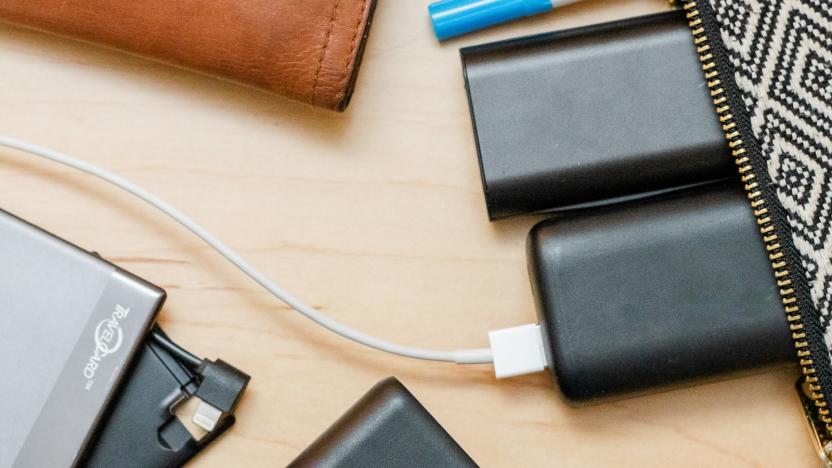
The best USB power banks for phones and tablets
By Sarah Witman This post was done in partnership with Wirecutter. When readers choose to buy Wirecutter's independently chosen editorial picks, Wirecutter and Engadget may earn affiliate commission. Read the full guide to USB power banks for phones and tablets. USB power banks offer peace of mind when your battery is dead or close to dying but you don't have access to a wall outlet. After nine hours of research and 30 hours of testing, we've found the best USB power banks to meet a wide range of needs—whether you're looking for a backup boost of power or something that will keep your phone or tablet fully charged for days at a time. The TravelCard Charger is the best option for someone who wants an emergency boost of power that's always on hand. It has the lowest capacity of any power bank we tested—it can charge most phones to only around 30 to 50 percent from empty—but it's unmatched in terms of weight (exactly 2 ounces) and size. It's bigger and thicker than the average credit card but not by much; it easily fits in a wallet or pocket. It has a built-in USB-A cable to charge it up and a built-in output cable (either Lightning, Micro-USB, or USB-C, depending on which version you need) to top off your phone or another handheld device with a little boost of power. The Jackery Bolt has been our favorite power bank to carry every day for several years running for a reason. It's as powerful as it is portable, fitting a high capacity—nearly two full charges for the latest smartphones—into a small package. You can also easily slip it into a small purse or most pants pockets—except maybe your tightest-fitting jeans. The two built-in output cables (Micro-USB and Lightning) mean you don't need to carry a cable to charge most devices, but it also has a fast-charging USB-A output port if you want to use your own longer cable. It comes with a built-in flashlight, which is a neat bonus. The Anker PowerCore 10000 PD lacks the built-in cables that set the Jackery and TravelCard models apart, but its capacity (10,000 mAh—enough to fully charge an iPhone XS more than three times) is a lot higher. Plus, in addition to a USB-A output port, it has a USB-C Power Delivery (PD) port that enables charging (both input and output) up to 18 watts—nearly twice as fast as most power banks we've found with built-in cables. This means less time waiting around for your phone, tablet, or other device (and the power bank itself) to charge. It's about the same size and weight (6.9 ounces) as the Jackery, and its rounded edges make it even easier to slide into a pocket or pouch. The Anker PowerCore Fusion 5000 is handy if you want a single, reliable device that you can plug in the wall to charge your devices overnight and then pack up and carry with you during the day. Its 5,000 mAh capacity is similar to that of the Jackery Bolt, enabling you to fully charge a phone like the iPhone XS more than once, and its two USB-A ports offer fairly fast charging for two devices at a time. We also appreciate that it offers Micro-USB input in addition to a fold-out AC plug—an important feature that other two-in-one models we considered lack. If you want a power bank that doubles as a wall charger, this is the best option we've found.